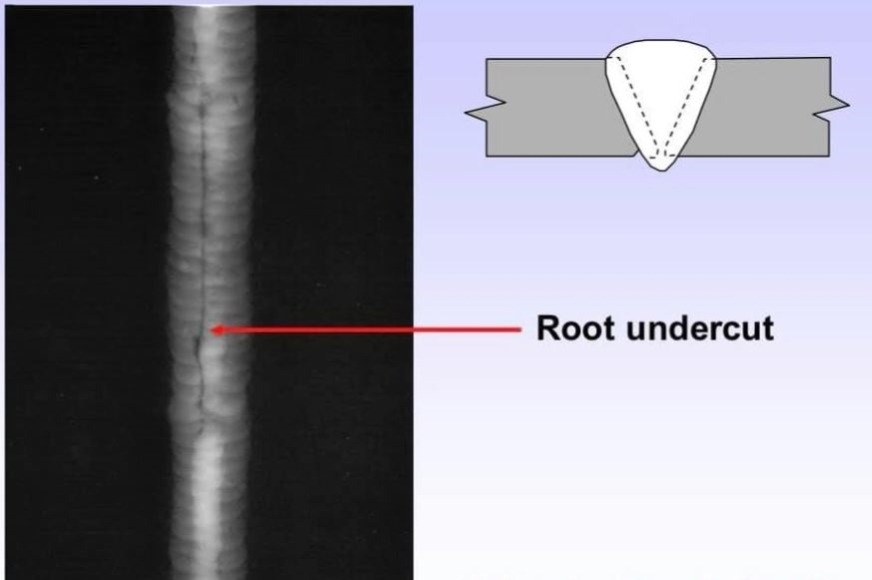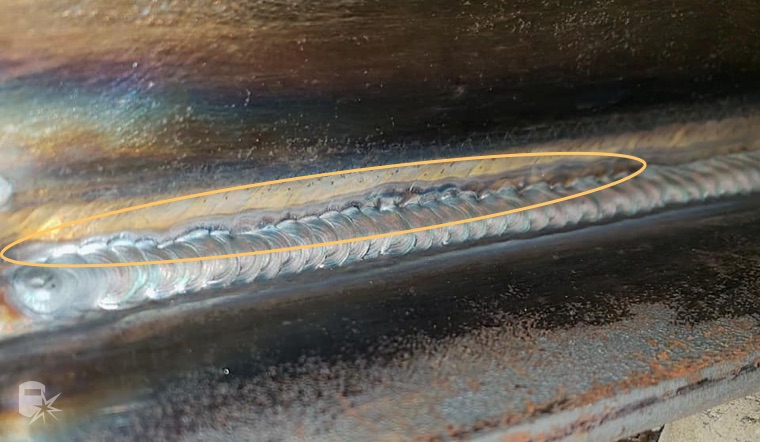Step-by-Step Overview to Preventing Weld Undercut in Different Metals
Step-by-Step Overview to Preventing Weld Undercut in Different Metals
Blog Article
Crucial Tips for Welders: Preventing Undercut Welding and Ensuring Stronger Weld Joints
In the realm of welding, accomplishing sturdy and solid weld joints is the keystone of producing premium job. One common challenge that welders commonly run into is undercut welding, which can endanger the stability of the weld joint.

Recognizing Undercut Welding
Undercut welding is a common welding flaw that occurs when the weld metal fails to properly fill up the groove and leads to a groove-like anxiety along the weld grain. This problem compromises the weld joint, making it prone to cracking and failure under tension. Undercutting can be triggered by numerous factors, consisting of extreme welding existing, high welding speed, inappropriate electrode angle, inaccurate electrode dimension, and poor welding method.
Among the main reasons for undercut welding is a discrepancy in between the welding existing and the welding speed. If the welding current is as well high or the welding rate is as well fast, the weld steel may not effectively fill up the groove, causing undercutting. Furthermore, making use of an electrode that is as well big can cause a similar end result, as the excess steel can not effectively stream into the groove.
To protect against undercut welding, welders ought to ensure they are using the proper welding criteria, maintain an appropriate electrode angle, pick the suitable electrode size, and practice proper welding strategies. By resolving these variables, welders can minimize the danger of damaging and create more powerful, more dependable weld joints.
Correct Welding Technique
Reliable welding method plays an important role in making certain the top quality and integrity of weld joints. Proper welding strategy entails a mix of ability, accuracy, and adherence to ideal methods. One essential aspect of appropriate welding strategy is maintaining the appropriate angle and range between the welding weapon and the work surface. Welders need to likewise pay close attention to the travel rate and warmth input to avoid issues like undercutting, porosity, or incomplete blend.
In addition, a steady and consistent hand motion is essential for creating solid and resilient weld joints. Welders ought to go for smooth, uniform motions to make certain also circulation of the weld product. Correct manipulation of the welding weapon and filler product is additionally crucial to accomplishing optimum penetration and blend.
Moreover, controlling the warm input and selecting the ideal welding parameters based on the material being welded are critical elements in attaining premium welds - Preventing weld undercut. Welders need to adhere to the advised setups offered by welding procedure specs and change them as required based on the specific demands of the project. By understanding proper welding methods, welders can significantly boost the stamina and dependability of their weld joints
Picking the Right Electrode
When taking into consideration the significance of selecting the right electrode in welding applications,Maintaining the proper angle and distance between the welding gun and the workpiece is basic. The choice of electrode plays an essential duty in identifying the top quality and stamina of the weld joint. Electrodes are available in various types, each made for particular purposes and products.
Firstly, selecting the suitable electrode diameter is essential. Thinner electrodes appropriate for welding thin materials, while thicker electrodes are better for thicker products and higher heat applications. Matching explanation the electrode diameter to the thickness of the work surface aids attain a balanced weld.
Second of all, comprehending the product make-up of the electrode is important. Different electrodes are designed for welding certain products like steel, stainless-steel, aluminum, or cast iron. Using the appropriate electrode product ensures good fusion and reduces the danger of flaws in the weld.
Finally, thinking about the welding position and strategy is important when choosing the electrode type. For example, certain electrodes are much better suited for above or vertical welding settings, while others work well for flat or horizontal settings. Choosing the right electrode based upon the welding technique boosts the general weld high quality useful reference and integrity.
Preparing the Base Steel
To make certain a successful welding process, what initial steps should be taken when preparing the base steel for welding? Correctly preparing the base metal is essential for attaining resilient and solid weld joints. The initial step in preparing the base steel is to cleanse it extensively to remove any impurities such as rust, paint, oil, or dirt. This can be done making use of a cord grinder, chemical, or brush solvents. In addition, any existing weld material or deposit from previous welding must be gotten rid of to guarantee a clean surface area for the new weld.

Carrying Out Post-Weld Examinations

After conducting these assessments, welders need to compare the outcomes against industry criteria and project demands to make sure that the weld joint fulfills all essential criteria. Any type of inconsistencies or inadequacies uncovered during the post-weld examination ought to be immediately addressed with suitable restorative measures to assure the weld's integrity. By vigilantly doing post-weld assessments and quickly dealing with any kind of issues, welders can maintain the quality and integrity of their job, inevitably adding to the safety and long life of the welded frameworks.
Conclusion

Finally, preventing undercut welding and guaranteeing more powerful weld joints need a mix of proper welding strategy, choosing the right electrode, preparing the base steel correctly, and performing post-weld inspections. By comprehending the reasons of undercut welding and applying the required safety measures, welders can generate top notch weld joints that meet industry standards and make sure the architectural stability of the bonded parts.
Undercut welding is a common welding problem that takes place when the weld steel fails to appropriately load the groove and results in a groove-like anxiety along the weld bead (Preventing weld undercut). Damaging can be triggered by numerous elements, including too much welding existing, high welding speed, incorrect electrode angle, wrong electrode size, and inadequate welding strategy
One of the primary factors for undercut welding is an inequality in between the welding existing and the welding rate. If the welding current is my site too high or the welding rate is too quickly, the weld metal may not adequately fill the groove, leading to undercutting.Keeping the proper angle and distance between the welding gun and the workpiece is essential when considering the significance of selecting the ideal electrode in welding applications.
Report this page